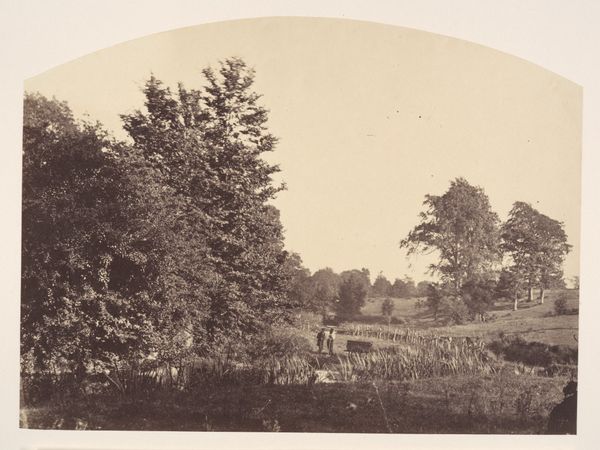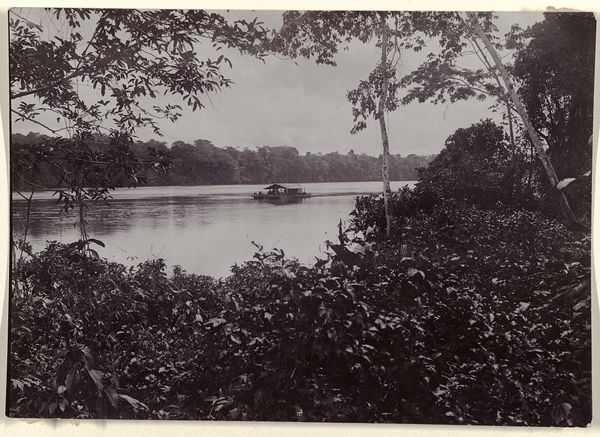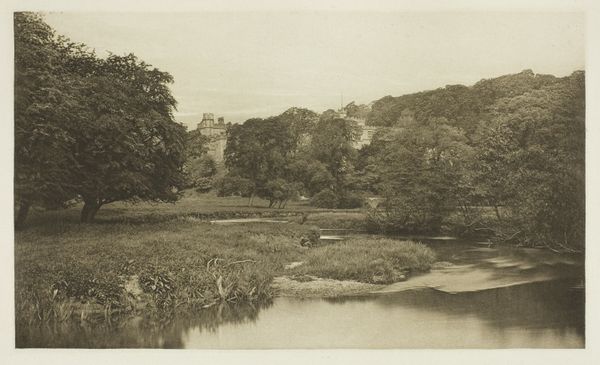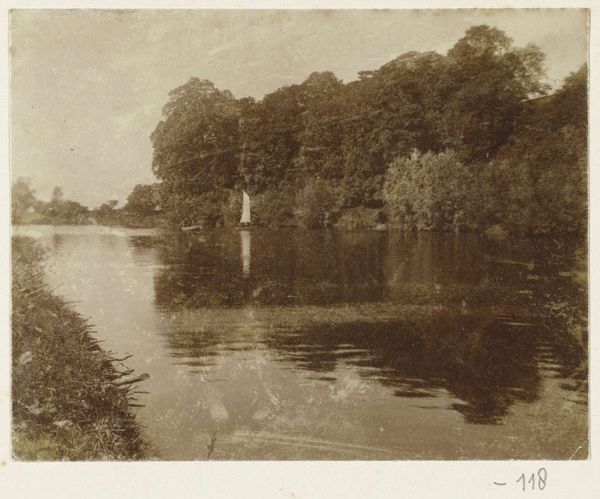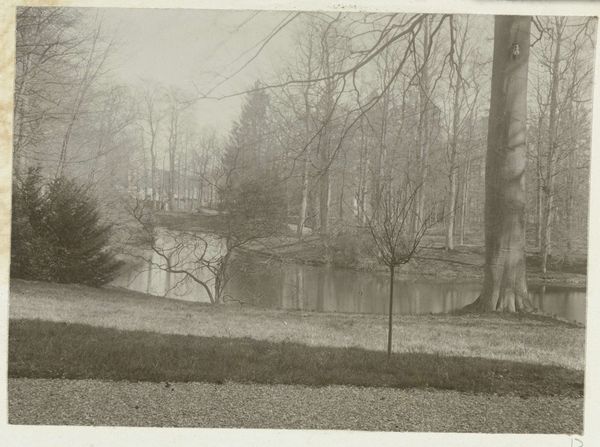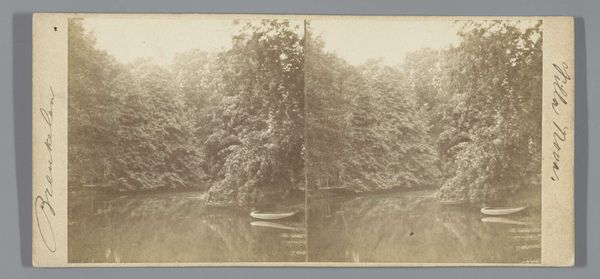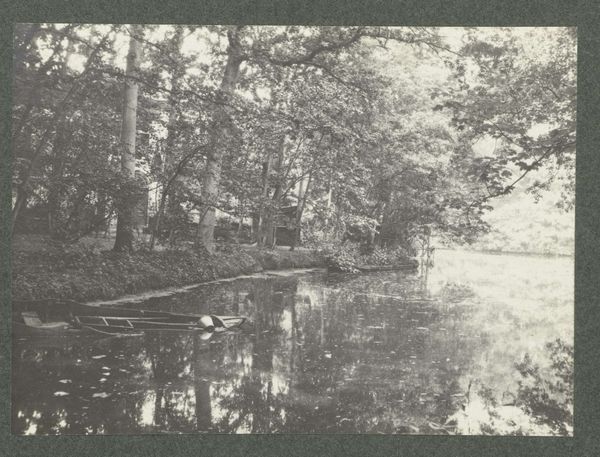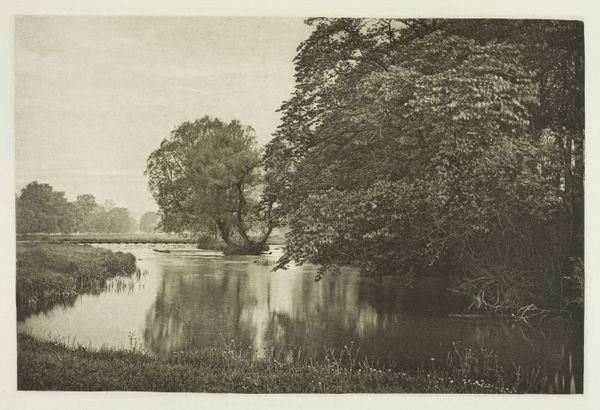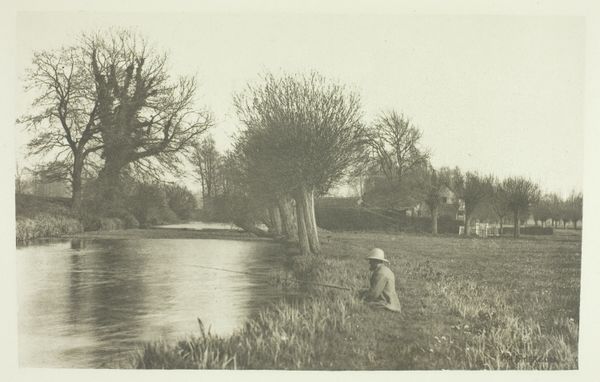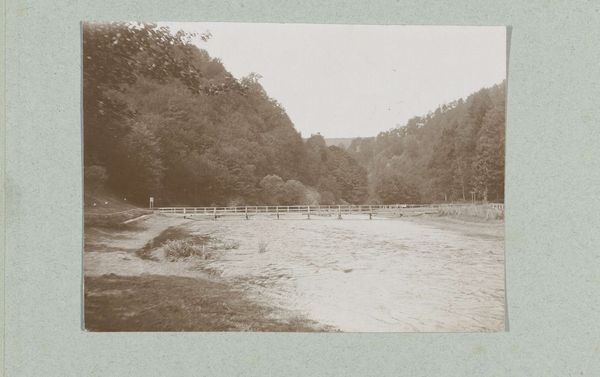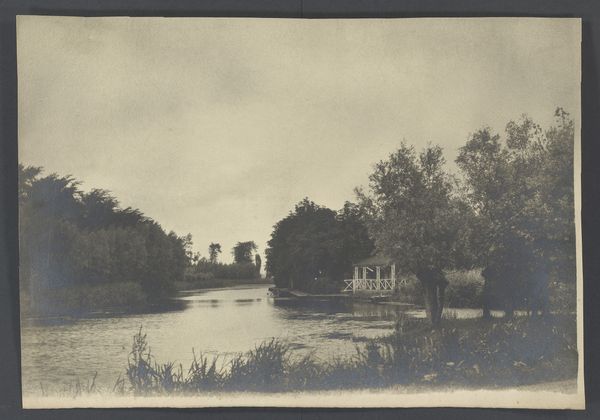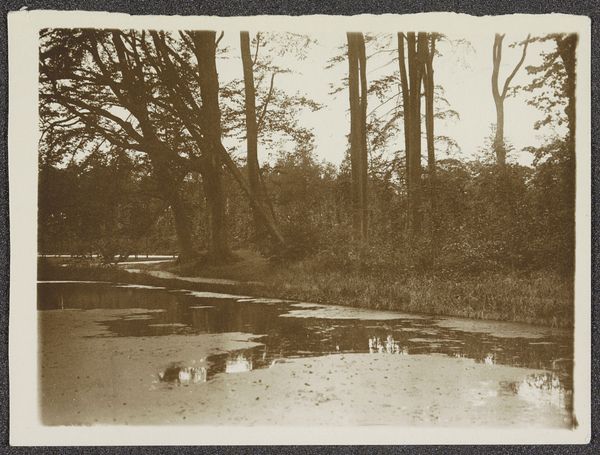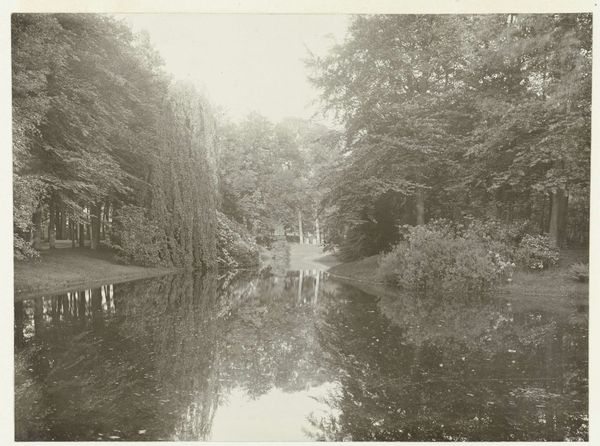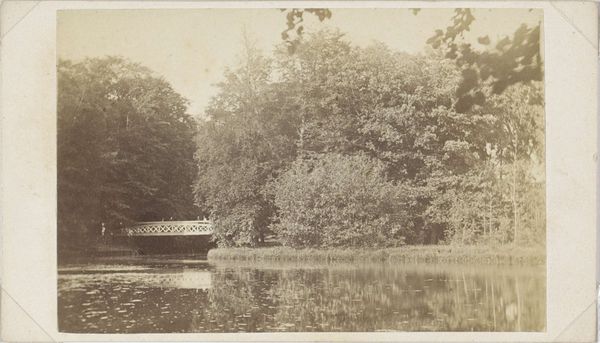
Kindje bij het water op landgoed De Pauw in Wassenaar c. 1920
0:00
0:00
photography
#
pictorialism
#
landscape
#
photography
Dimensions: height 73 mm, width 98 mm, height 198 mm, width 263 mm
Copyright: Rijks Museum: Open Domain
Curator: Looking at the subtle tonalities in this image, it immediately feels like a memory, hazy and soft. Editor: Indeed. Here we have a photograph by Geldolph Adriaan Kessler, titled “Kindje bij het water op landgoed De Pauw in Wassenaar,” created around 1920. Currently, it resides in the Rijksmuseum. Curator: Kessler really leans into Pictorialism here. Notice how the focus is selectively soft, almost blurring the lines between photography and painting. The composition emphasizes atmosphere over sharp detail. Editor: Pictorialism definitely offered an escape from the rapidly industrializing world. Picturesque estates, such as de Pauw, were exclusive retreats for a moneyed class and could present an idealized version of family and nature. This style often catered to elite sensibilities. Curator: Agreed. Focusing on the figure, this child stands almost in the middle of the lake, and seems like a structural key that links together the shore and water and tree reflections to create an integrated pictorial field. It makes the viewer pause. Editor: Kessler was active in a period profoundly shaped by social hierarchies. Photographs like these acted as markers of privilege and were instruments of visual representation. Kessler participated actively within social milieus interested in aestheticizing their prestige. Curator: Precisely, though I also see the photograph on its own terms as a balanced arrangement of light and shadow, a quiet testament to the power of tonal gradation. This approach is how the picture sustains a specific affect, perhaps timeless nostalgia. Editor: Well, that is a perspective divorced from material conditions. Even aesthetics, let's not forget, are not neutral categories. But yes, the composition creates a visual appeal regardless of whatever ideology may be encoded. Curator: In the end, whether through historical readings or compositional analysis, both illuminate the picture from different vantage points. Editor: Yes. Hopefully listeners feel empowered to reflect on both technique and social context to create a better image, both literally and figuratively, of works like these.
Comments
No comments
Be the first to comment and join the conversation on the ultimate creative platform.
